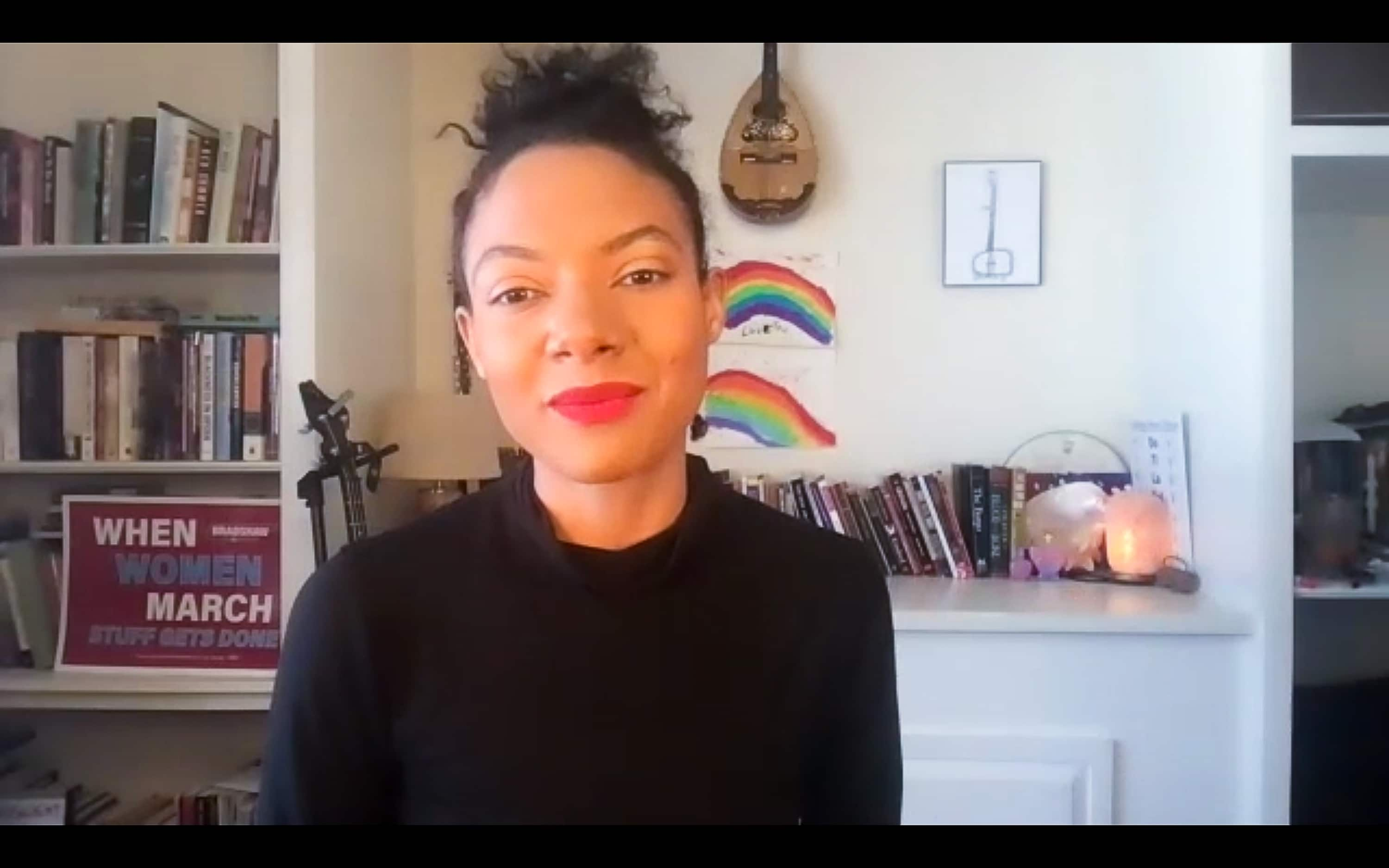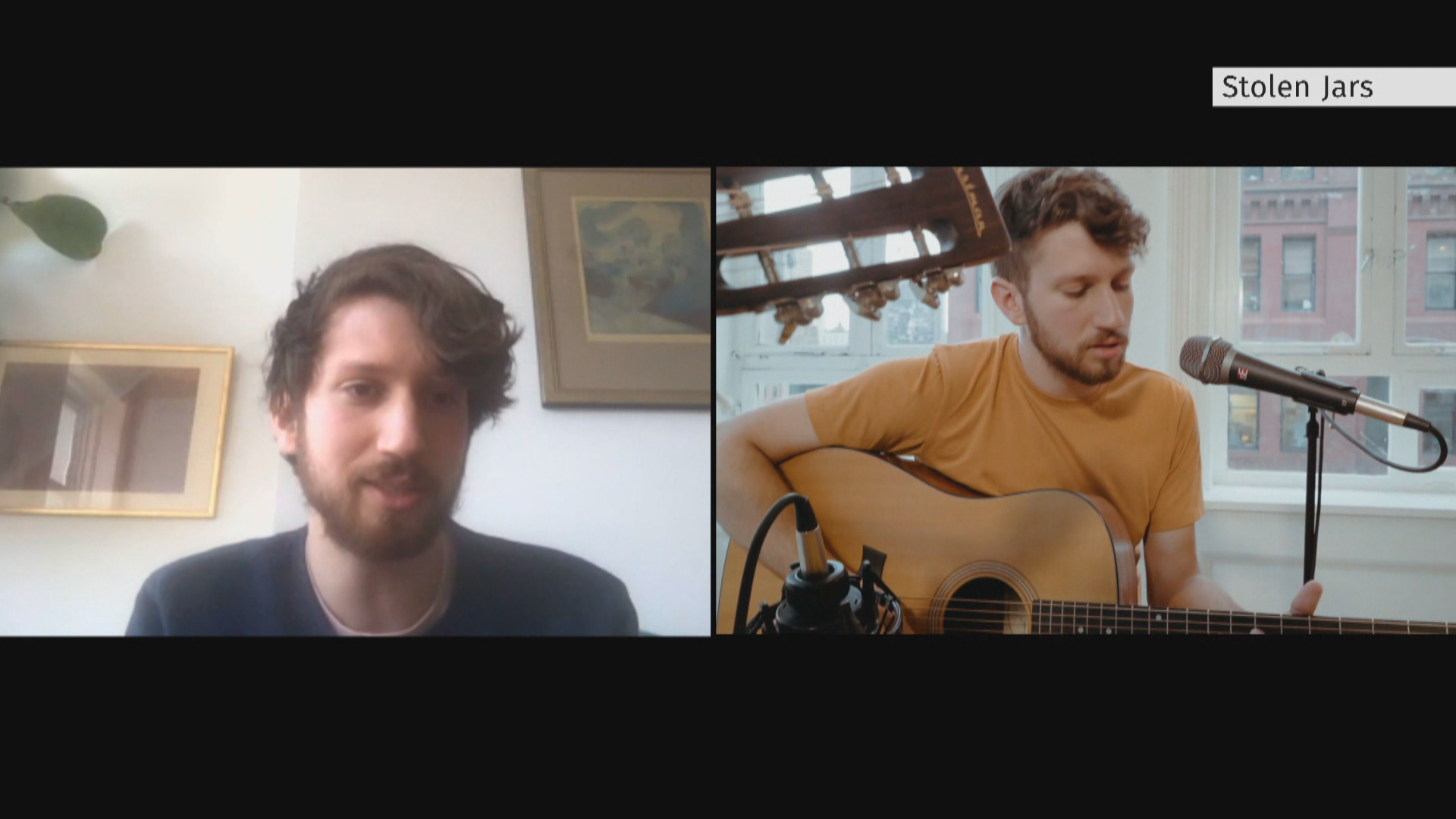The death of live music by COVID-19 has left many artists with little or no way to support themselves, while threatening the existence of the “middle class musician” itself.

Many musicians in Canada have struggled to make a living during the pandemic because of closed venues and streaming services that average only half a cent per stream. 2:04
The music industry was broken a long time before COVID-19 shut it down. Montreal-born musician Allison Russell knew that years before the world collapsed in on itself, knew it the 200 days a year she spent touring with her bands Our Native Daughters, Birds of Chicago or Capitol Sun Rays.
She knew it performing in Europe at 40 weeks pregnant, knew it when she once again found herself travelling the country before her daughter, Ida, had even turned four weeks old, and knew it when Ida said she couldn’t deal with life on the road anymore.
“She actually had an intervention with her dad,” Russell recalled.”Ida said, ‘I want to go to school. I don’t want to be a band-baby anymore.'”
So when the pandemic shut down the live music scene, it struck her as a bit of a blessing in disguise. For the first time, Russell had the ability to focus on her writing and her solo career — focus that landed her on the Rolling Stone’s list of 10 artists to watch in 2021, and with an upcoming album in her back pocket.
But despite hitting what seemed to be her big break, financially Russell was doing worse than ever. She had escaped the “subsistence touring model,” but lost three-quarters of her income in an industry already struggling to support artists.
It’s an issue familiar to creators around the world. As streaming continued to supplant record sales and other traditional sources of income over the past decade, musicians have been forced to rely more and more on unending touring schedules.
But then COVID-19 supercharged the problem. The death of live music left many artists with little or no way to support themselves, while threatening the existence of the “middle class musician” itself.
WATCH | Allison Russell on the life of a middle-class musician:

Montreal-born musician Allison Russell says streaming has made it almost impossible to sustain a career as a middle-class musician. 0:53
“[What] really struck home when these walls came down was how precarious our existence was,” Russell said.
“That caused us to have to reset, and really think about what exactly we were talking about. How do we have sustainable careers moving forward?”
Art thrives as artists struggle
Despite mass business closures, people didn’t stop spending on arts during the pandemic — in many cases, the opposite.
Searching for perfect Zoom backgrounds, art sales skyrocketed; T.V. viewership increased for the first time in nearly a decade, and both the Recording Industry Association of America and the British Phonographic Industry reported an increase in music consumption.
But for musicians themselves, the game is different. Despite stay-at-home orders pushing people to consume more art, the music industry’s shift from album revenues to a streaming model has kept artists from seeing the benefits of that growth.
Steve Sainas, a musician and educator based in Port Coquitlam, B.C., says he’s witnessed those changes first hand over the four decades he’s spent as a professional musician.
“As a recording artist, we went from being able to sell CDs and being able to recoup our investment on an album to now: CDs, albums, physical product, even MP3 downloads have become almost obsolete,” he said. “I’d say 99 per cent of people stream their music, and streaming doesn’t pay.”

And with the way things are set up, Sainas said, that discrepancy is more important now than ever.
The music industry is fundamentally broken up into three separate arms: recorded music, music licensing and live music. Where recorded music — physical album sales — was once the bread-and-butter for musicians, first the advent of piracy platforms like Napster, and then the gradual shift to streaming services like Spotify, Amazon and Apple Music made that framework unsustainable.
“In order for me to earn a minimum wage, an annual minimum wage of $30,000, I need to gain six million streams at the average royalty rate of half a cent per listen,” Sainas said. “That’s unattainable.”
Because of that, live music became the primary way for artists to sustain themselves. In fact, by 2016, over half of Canadians’ music spending went toward live music. But with the pandemic, that crutch disappeared, forcing musicians to once again focus on the recorded music industry, even though its been fundamentally broken for years.
If that’s not fixed soon, Sainas said, there’s little chance artists will be able to support themselves in the future, much less make it through the pandemic.
The end of the ‘venue ladder’
Beyond musicians staying afloat in the industry, breaking in has become harder than ever before. Erin Benjamin, CEO of the Canadian Live Music Association, explained the way that most musicians gain a platform is through the “venue ladder” — playing at smaller, local “incubator” venues to build an audience.
Now, 64 per cent of the live music industry across Canada is in danger of closing before the pandemic ends, and the shift to Zoom concerts has effectively shut out up-and-coming acts.
“It’s much harder if you’re an emerging artist. You’re now competing against celebrity artists who are also live streaming, and all of your other colleagues in the country,” Benjamin said. “It’s much harder to stand out.”
Andrew Fedyk and Joe Depace, current Juno nominees and members of the DJ group Loud Luxury, said they’ve witnessed the same thing. During the pandemic, they curated their “Beyond Boredom” video series, playing concerts to a set of inflatable “air dancers.”
It was a way to connect with fans while forced to avoid live shows. But they’re using social media to sustain an audience they already had through the pandemic — not gain a new one altogether.
WATCH | Loud Luxury’s ‘Beyond Boredom’:
Fedyk said he worried how musicians could build their own audiences without the venue ladder.
“Every artist — even ones like The Weeknd — they all started at very, very small venues, same as us,” he said. “You know, it’s part of your growth.”
While The Weeknd’s first show wasn’t tiny — his first concert was at Toronto’s Mod Club in 2011 — he continued to play mostly mid-sized, local venues until his first U.S. tour the following year.
And even as his entry into the industry reflected one alternate way for musicians to make it — releasing music online — Benjamin explained that is only a possibility for an incredibly small number of artists. At the same time, it excludes backing musicians, studio musicians and anyone else who tries to make a living in the industry without superstar-level fame.

There have been other recent attempts to change how musicians operate in the industry: high-profile musicians have opted to sell their entire songwriting catalogues instead of grappling with the industry as it is, though that’s not an option for middle-class musicians.
Musician and entrepreneur Jay-Z sold his streaming service Tidal —which has the stated goal of “creating a more sustainable and practical model for the music industry” — to Twitter CEO Jack Dorsey, but there have been rumours about the service struggling for the past several years.
And Kings of Leon became the first band to release an album as an NFT — a cryptocurrency-based way to authenticate art and give fans access to exclusive content — but the model has been critiqued for the huge ecological impact NFTs have.
Sainas’s plan, meanwhile, was to send a petition to the Government of British Columbia calling for an ongoing Canadian Musicians’ Support Fund to guarantee musicians an annual living wage.
Brooklyn-based musician Cody Fitzgerald co-founded the Union of Musicians and Allied Workers (UMAW) with a similarly stated goal — to fix how artists are paid by streaming platforms.
In global “Justice at Spotify” actions planned for March 15, they are demanding a penny-per-stream from the streaming service, among other changes. It’s a fundamental shift without which, Fitzgerald says, music as a career could forever move out of the middle class.
WATCH | Music industry needs a minimum-wage for musicians, says UMAW co-founder:

Brooklyn-based musician Cody Fitzgerald said he co-founded the Union of Musicians and Allied Workers to help guarantee a living wage for musicians. 1:06
“I mean, I say ‘middle class musicians’ and then laugh, but that’s the truth,” Fitzgerald said, explaining that the costs associated with recording, touring and marketing an album can be astronomical.
All these are first steps though, incremental moves toward an overhaul of the system artists are forced to use. Because if the way the industry is laid out doesn’t change soon, he said, it could be forever shut off from anyone who doesn’t start out wealthy.
“This Justice at Spotify argument is the initial version of a minimum wage argument for musicians,” he said. “We deserve a minimum wage in this work, because it is work.”
